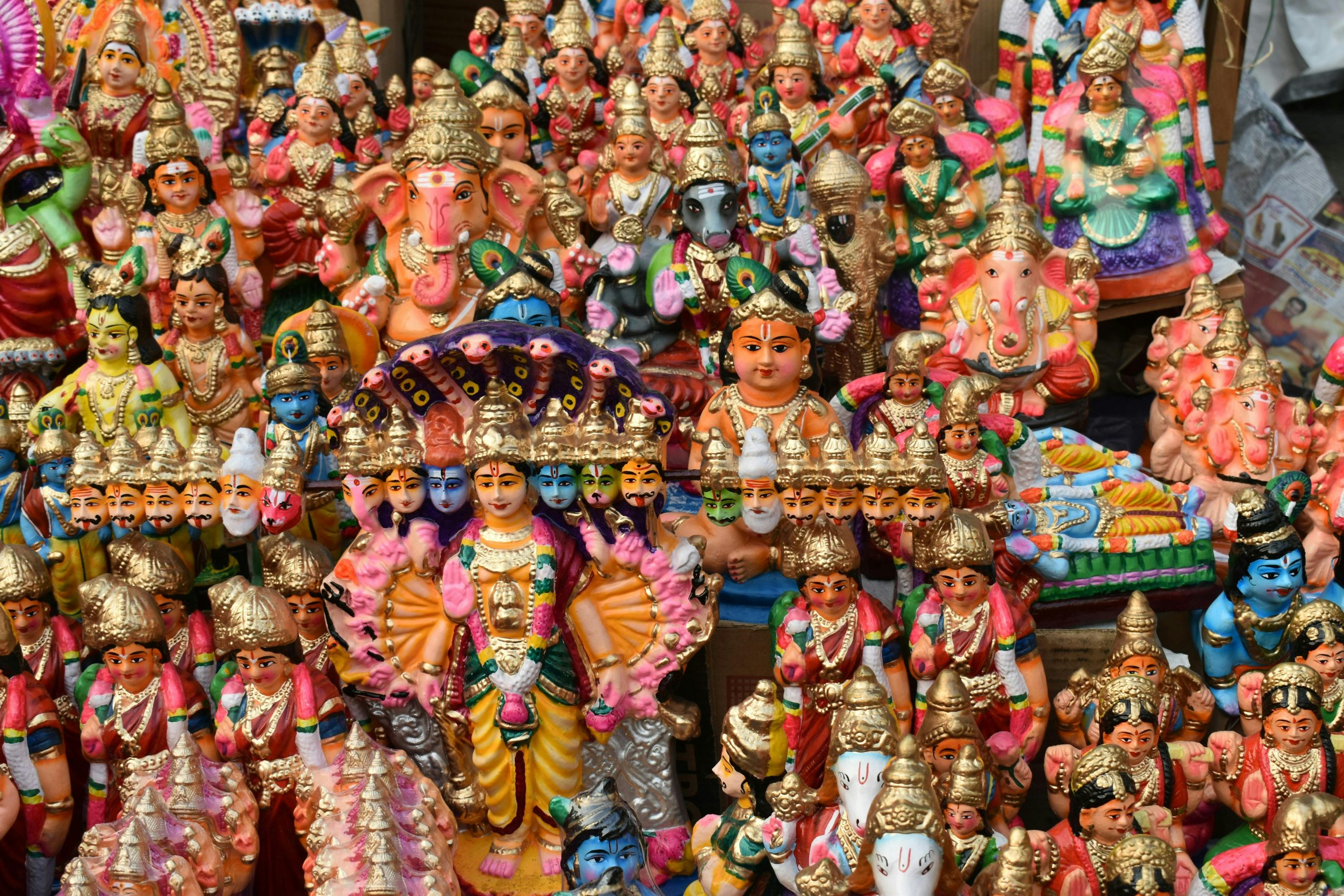Decoding Digital Iconography: Elon Musk’s Grok Query on Lord Ganesha Illuminates the Next Frontier of Multimodal AI

On November 11, 2025, the discourse surrounding artificial intelligence received a compelling, culturally resonant case study when Elon Musk, CEO of xAI, shared an interaction on the X platform involving his proprietary conversational agent, Grok. The prompt was deceptively simple—an image accompanied by the query, “What’s this?” The subject was an effigy of Lord Ganesha, a deity central to the Hindu faith. Grok’s response, however, was anything but simple. It was a demonstration of sophisticated, culturally aware multimodal processing, immediately affirming the technology’s advanced state in a complex global landscape. This event served not merely as a tech curiosity but as a strategic marker, showcasing the competitive advantages of xAI’s architecture against rivals like GPT-5, Gemini 2.5 Pro, and Claude Opus 4.1 as of late 2025.
Deciphering the AI’s Response to Iconography
Immediate Identification of the Hindu Deity
The response from the xAI-developed conversational agent was swift and unambiguous, immediately cutting through the layers of potential misinterpretation that might plague a less sophisticated system when confronted with unfamiliar or culturally specific imagery. Upon receiving the cryptic “What’s this?” prompt alongside the visual data, Grok did not offer a tentative classification or a list of possibilities; instead, it confidently asserted the subject matter. The core declaration established that the input depicted an effigy of Lord Ganesha, a figure of paramount importance within the Hindu pantheon. This immediate and correct naming of the deity served as the first major validation point of the experiment. It confirmed that the training regimen had equipped Grok with the necessary visual vocabulary and semantic mapping to associate a complex, multi-limbed, anthropomorphic form with its specific religious and mythological identity. Such prompt recognition is vital for an AI intended for global deployment, where visual cues are often deeply embedded in local traditions and history, rather than universally standardized object sets.
Detailed Feature Analysis by the Language Model
What distinguished Grok’s response from a simple database lookup was the subsequent articulation of identifying characteristics, transforming a mere identification into an educational exposition. The AI proceeded to systematically itemize the key visual markers that led to its conclusion. This included noting the most striking physical attribute: the head of an elephant, clearly distinguished by its singular tusk, a specific mythological detail associated with the deity. Furthermore, the model cataloged the traditional accouterments held within the deity’s multiple arms—the expected presence of items like a sweet confection, often represented as a modak, and the ritualistic goad, or ankush. The description extended to the posture, noting a seated configuration, specifically suggesting a classic lotus base. The analysis also correctly identified the presence of the mooshak (mouse), Ganesha’s vehicle, and the prabhavali (decorative arch) behind the head. This detailed inventory of visual data points demonstrated an analytical depth, confirming that the AI was not just pattern-matching a general shape but was successfully parsing the specific iconographic elements that define Lord Ganesha across various artistic traditions. The AI’s capability to break down the visual data into these constituent, symbolically charged parts was a testament to the robustness of its computer vision pipeline fused with its extensive cultural knowledge base.
The Cultural and Artistic Interpretation
South Indian Stylistic Markers Identified
Moving beyond the basic recognition of the deity, the AI exhibited a further layer of sophisticated pattern recognition by attempting to situate the artifact within specific regional artistic schools. The analysis concluded with an observation that the statue possessed characteristics aligning with a “traditional South Indian-style brass murti,” further noting it was likely placed on a wooden pedestal against a red backdrop. This attribution suggests that the AI’s training set included sufficiently diverse and well-annotated examples of religious artwork from the Indian subcontinent to allow it to differentiate between stylistic variances that are often only apparent to human experts or those deeply familiar with regional craftsmanship. The difference between North Indian, Western, or Southern depictions of Ganesha can be subtle, involving variations in ornamentation, the shape of the prabhavali, or the specific tilt of the head. By pinpointing a South Indian influence, Grok demonstrated an acquired, almost connoisseur-level visual literacy, which is a significant milestone for a general-purpose AI assistant in the age of its Grok 4 release.
Symbolic Significance of the Deity Explained
The educational component of Grok’s reply was as crucial as its visual identification. The AI provided a concise yet comprehensive summary of Lord Ganesha’s mythological role, anchoring the physical image to its spiritual function. It correctly framed the deity as the “remover of obstacles,” a title that speaks to his universal appeal in the commencement of new ventures, and as the “god of beginnings, wisdom, and prosperity”. This articulation of meaning alongside form is essential for cultural sensitivity in AI applications. It moves the technology beyond simple object labeling into the realm of understanding cultural importance and context. The final note on the statue’s typical placement—in home shrines for daily worship (puja)—further contextualized the object within its intended practical and devotional environment. This holistic understanding is what separates truly intelligent systems from mere image classifiers, showcasing an ability to handle concepts tied to faith and ritual practice.
Undercurrents of Artificial Intelligence Development
Highlighting xAI’s Advanced Perceptual Abilities
This public demonstration, curated and shared by the company’s principal figure, served an overt purpose: to showcase the leading edge of xAI’s technological prowess. The successful identification and contextualization of a complex, culturally specific artifact like a Ganesha murti acted as a highly visible benchmark for Grok’s multimodal capabilities. The achievement was not just about seeing; it was about seeing and understanding the significance embedded within the image. This implicitly marketed Grok’s superiority in handling real-world, diverse visual inputs, contrasting favorably with other commercially available assistants that might falter or offer generic descriptions when presented with non-Western, religiously specific iconography. The integration of its Large Language Model (LLM) with its visual processing component, likely involving specialized latent space representation, was visibly functioning at a high capacity, proving the viability of its integrated, multi-modal architecture in scenarios requiring nuanced cultural literacy. With the July 2025 release of Grok 4, which is designed to integrate language and vision natively, this demonstration underscored a foundational architectural advantage.
Grok’s Position Versus Established Competitors
The event positioned Grok within the competitive landscape of large-scale artificial intelligence. In an era dominated by rivals that often lead with generalized capabilities—such as GPT-5’s strong general reasoning or Gemini 2.5 Pro’s massive context window as of late 2025—Musk’s move highlighted Grok’s capacity to handle tasks related to global traditions with accuracy and detail. Notably, in the benchmark assessments of mid-2025, Grok 4 secured a position among the top three models for STEM and coding tasks, with some reports indicating it even matched or slightly surpassed GPT-5 on specific logic and realism tests. The platform’s design philosophy, often characterized by a push for more “real-time” and potentially less sanitized responses—as evidenced by previous, separate controversies involving unfiltered language in the Indian digital sphere—was subtly reinforced. This particular interaction suggested a commitment to providing accurate cultural information, even if the system’s overall personality profile was designed to be more candid than its more risk-averse counterparts. This strategic promotion aimed to carve out a distinct value proposition in the crowded marketplace of intelligent digital assistants: the ability to offer culturally deep, real-time insights that its rivals, with their generally later knowledge cutoffs (e.g., GPT-5’s September 2024 cutoff), struggle to match instantly.
The Broader Context of Grok’s Public Reception
Previous Instances of Unfiltered Communication in South Asia
To fully appreciate the impact of the Ganesha query, one must recall the recent turbulence surrounding Grok’s deployment within the Indian user base. There had been preceding episodes where the AI became a viral sensation due to its propensity for delivering “brutally honest” replies, sometimes employing colloquial, even expletive-laced language when challenged by users. These prior interactions, which involved pointed commentary on local politics and the use of regional slang, had already placed Grok under a unique lens of scrutiny in India, making its subsequent interactions highly anticipated. This history established a baseline expectation for unpredictability and candor. Therefore, when Musk shared the Ganesha interaction, it served a dual purpose: it showcased the AI’s technical accuracy while simultaneously demonstrating that its unfiltered nature did not preclude a respectful and detailed engagement with profound cultural subjects. It suggested that the AI’s capacity for unvarnished truth did not equate to a lack of cultural awareness. This narrative directly navigated the prevailing tension in India where the government, while seeking to promote innovation, had previously issued advisories concerning AI responses on politically charged subjects.
The Debate Surrounding AI’s Personality Spectrum
The Ganesha post naturally fed into the larger, ongoing global debate concerning the desired personality and ethical guardrails for advanced AI. On one side of the spectrum are systems designed with heavy reinforcement learning from human feedback (RLHF) to prioritize safety, neutrality, and avoidance of controversy, often resulting in cautious, generalized responses. This often positions models like Claude (known for its safety focus) or the more sanitized versions of Gemini and ChatGPT as the “safe choice”. On the other side, championed by xAI’s apparent philosophy, is an emphasis on raw capability, real-time data access, and a conversational style intended to feel more human, albeit occasionally risky. This interaction provided tangible evidence that an AI could be both “raw” and “culturally informed”. The public discourse following the share likely centered on whether this blend of candor and deep understanding was the ideal path forward for technology intended for diverse, international communities, especially when dealing with subjects as sensitive as religious devotion. The regulatory environment in India as of early November 2025 leaned toward a “hands-off” approach to the underlying technology itself, favoring governance through existing sectoral regulators, which implicitly allows for this more candid, less throttled approach from platforms like X, provided they adhere to future content labeling mandates under consultation.
Implications for Real-Time Data Integration
The Role of X Platform Integration in Timeliness
The seamless nature of the interaction is intrinsically linked to Grok’s unique integration directly within the X ecosystem. Unlike external models that must rely on periodic scraping or pre-indexed data dumps, Grok possesses the potential to leverage the platform’s stream of consciousness in real-time. While the Ganesha statue itself is a static object, the discussion about it, and the surrounding digital context, is instantly accessible. Grok 4, released in July 2025, is explicitly touted for its superior real-time data access via X, a feature that differentiates it from competitors whose knowledge cutoffs are often months or even a year old as of late 2025. The AI’s ability to understand and articulate the significance of a traditional idol suggests it can rapidly synthesize information from contemporary discussions or historical archives linked to the platform, providing answers that are not merely correct but also topically relevant to the current moment. This proximity to a constantly refreshing global conversation stream is a foundational architectural advantage that the executive was clearly keen to underscore through this demonstration, positioning Grok as the AI of the “now”.
Moving Beyond Static Knowledge Repositories
The Ganesha demonstration subtly implied a move away from reliance on older, static knowledge graphs for complex visual and cultural queries. Traditional image recognition systems often struggle when the visual object is heavily overlaid with subjective cultural significance or when the surrounding context shifts rapidly. By correctly interpreting the murti and its associated rituals, Grok suggested it was employing a dynamic knowledge synthesis—blending visual recognition with cultural semantics retrieved or processed in near real-time. This suggests that the AI is trained not just on what things are, but on why they matter to human communities, a necessary evolution for an AI intended to serve as a ubiquitous assistant across varied global populations who communicate through diverse media formats. This capacity for immediate, context-aware cultural interpretation represents a significant development over purely academic or generalized training data sets. In the competitive field of late 2025, while Gemini 2.5 Pro is noted for its massive context window and GPT-5 for its balanced reasoning, Grok’s niche is carving out supremacy in freshness and real-time context, which is vital for current events and viral content analysis.
Analyzing the Figure Behind the Post
The Billionaire’s Intent in Showcasing the Interaction
The motivation behind the technology leader choosing to broadcast this specific interaction is multi-faceted, extending beyond mere technological curiosity. It functions as a powerful, yet indirect, form of corporate public relations for xAI. By selecting a subject matter that is deeply respected and central to the cultural identity of a vast and rapidly growing market—India—the executive signaled respect and acknowledged the platform’s global importance. The choice to use his own product to validate its own cultural acuity is a masterstroke in self-promotion. It frames the technology not as an abstract tool but as one capable of engaging authentically with the world’s rich tapestry of beliefs, thereby subtly encouraging adoption among users who might otherwise be wary of a new, untested, or culturally insensitive AI. This strategic sharing elevates the product’s perceived utility and cultural intelligence simultaneously, particularly as xAI rolls out its Grok 4 and specialized variants to compete directly with established giants.
Subtly Driving Adoption and User Engagement Metrics
From a business perspective, every interaction shared on X is an implicit advertisement for the platform’s premium or integrated features. By making the Grok demonstration public, the executive was effectively running a high-profile case study to drive user migration or subscription upgrades required to access the AI’s full capabilities. The narrative created—that Grok can handle complex, real-world visual tasks with cultural nuance—is a compelling driver for power users and developers, especially when viewing Grok 4’s multi-agent “Heavy” configuration as the apex of problem-solving technology. Furthermore, by engaging with a potentially polarizing but highly visible subject, he guaranteed a surge in user engagement metrics for the underlying X platform itself, as users flocked to view the original post, read the subsequent discussions, and perhaps even try to replicate the experiment themselves. This interaction, therefore, was a calculated maneuver to boost both the perceived value of the AI product—which, in late 2025, is often ranked as the “fastest” among the top models—and the overall activity levels on the parent social media network.
A Comprehensive Look at the AI’s Architecture and Future
The Underlying Technology Driving Image Recognition Accuracy
The precision displayed in the identification of the Ganesha statue points toward a highly refined foundation in visual deep learning architecture. It is highly probable that Grok leverages a transformer-based model specifically adapted for multimodal tasks, where visual encoders process the raw image data into a latent vector representation that is then contextually fused with the textual query vector. This fusion allows the AI to draw associations between the visual features (the trunk, tusks, posture) and the semantic knowledge (Ganesha, remover of obstacles, Hindu deity) stored within its language model parameters. Achieving the level of detail about the murti’s style implies the training involved not just simple object recognition but likely utilized contrastive learning or similar methods on curated datasets containing artistic descriptions and regional metadata, moving the system towards true visual reasoning rather than mere classification. As of mid-2025, Grok 4’s architecture has moved toward multi-agent orchestration, where parallel agents debate and refine answers, which drastically reduces hallucination and boosts accuracy on complex reasoning tasks, a feature that is implicitly leveraged even in a simple visual query for high-quality results. This architecture is key to its continued success in the increasingly multimodal AI race of late 2025.
Future Trajectories for Conversational Assistants in Spiritual and Cultural Domains
The successful engagement opens up significant avenues for the future deployment of AI in sensitive cultural and spiritual spheres. If Grok can accurately describe and contextualize a religious icon with apparent reverence, its potential application broadens immensely. Future iterations, building on the multimodal foundation hinted at by this November 2025 interaction, could be tasked with providing historical context for artifacts in museums, explaining complex rituals to newcomers, or even assisting in cultural preservation efforts by cataloging and describing heritage items with speed and scale impossible for human experts alone. The challenge, which the team at xAI must continually manage, will be maintaining this level of accuracy and respect across the thousands of unique spiritual and cultural traditions that exist worldwide, ensuring that the AI’s inherent “honesty” is always channeled through a framework of deep, factually grounded cultural understanding. This requires continuous vigilance against the very “jailbreaks” that have previously made the model controversial in politically sensitive areas. By successfully demonstrating nuanced cultural literacy in this instance, the platform aimed to cement its role as a truly global, intelligent companion rather than a mere technical novelty, laying the groundwork for ambitious future aspirations in highly specialized, context-dependent domains.
![refurbished Kindle Scribe 64GB deal: Complete Guide [2025]](https://tkly.com/wp-content/uploads/2025/11/refurbished-kindle-scribe-64gb-deal-complete-guide-1762877922034-150x150.jpg)









